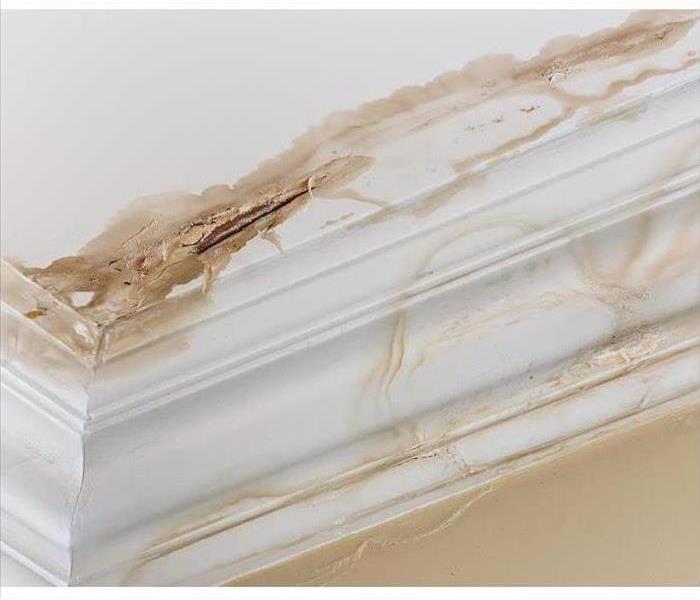The 4 Steps of the Roof Damage Cleanup Process
1/14/2022 (Permalink)
Many people think of flooding as something that happens at the base of a building. Floodwaters rise and break over barriers to flood the basement and bottom floors. Another common flooding problem associated with storms, however, is a roof leak. If the roof of your commercial building in Colorado Springs, CO, gets damaged, rain can seep in and cause further problems. Here are the steps to resolve those problems.
Steps To Cleaning Roof Damage.
1. Drying Area
The first thing that has to happen when missing shingles cause water damage in your attic or top floor is for all the excess water to be removed. Water remediation professionals use industrial pumps to remove standing water. They may increase airflow in the affected area to dry surfaces. Making sure the area is dried quickly can help prevent secondary damage such as mold growth.
2. Removing Damage
If the roof leak is significant, there may be a lot of damage not just to the roof but also to the layers of the building directly underneath it. Waterlogged walls or ceilings are no longer structurally sound. Materials have to be torn out if they cannot be salvaged.
3. Disinfecting Surfaces
Because flood water is contaminated, everything it touches must be sanitized. Professional strength cleaners are used to remove bacteria and other harmful substances. Afterward, the surfaces can be tested to ensure that they are clean.
4. Rebuilding Roof
After the cleaning is finished, the technicians repair the damaged roof. They make sure the base is strong and well-sealed against further leaks. Then they replace the shingles that are broken or missing. If any interior parts need to be rebuilt, they can do that as well.
A roof leak doesn’t always show signs of significant damage at first, so it’s important not to forget the roof in your inspection after a flood. You can avoid further problems by addressing any roof issues in a timely manner.




 24/7 Emergency Service
24/7 Emergency Service
